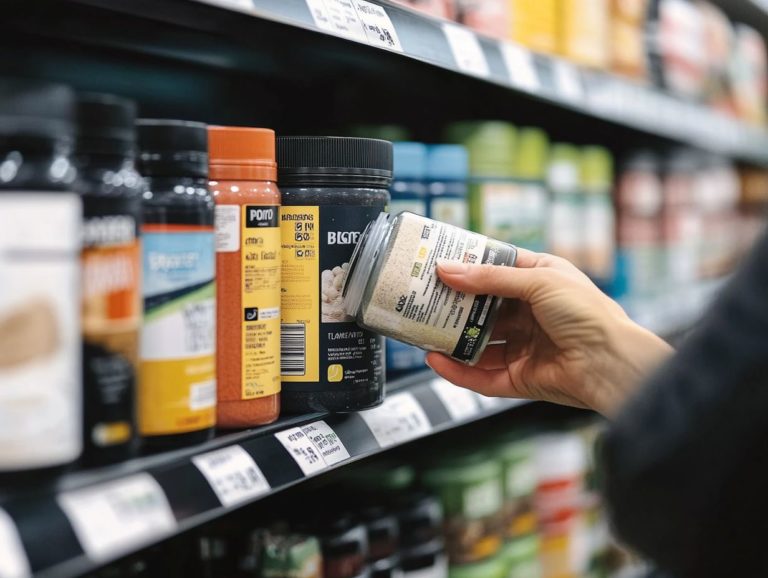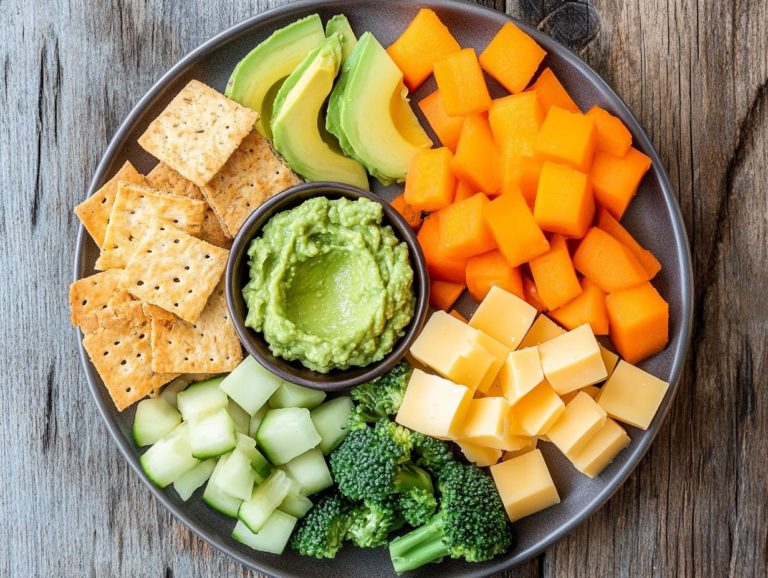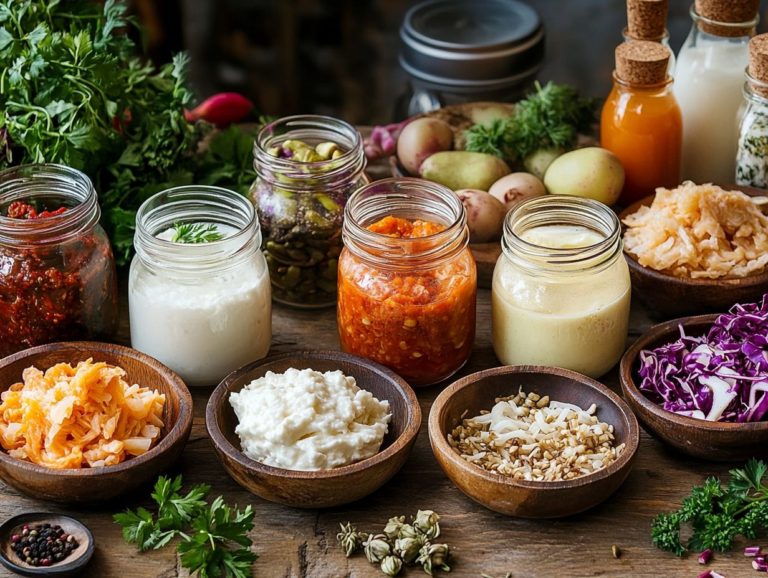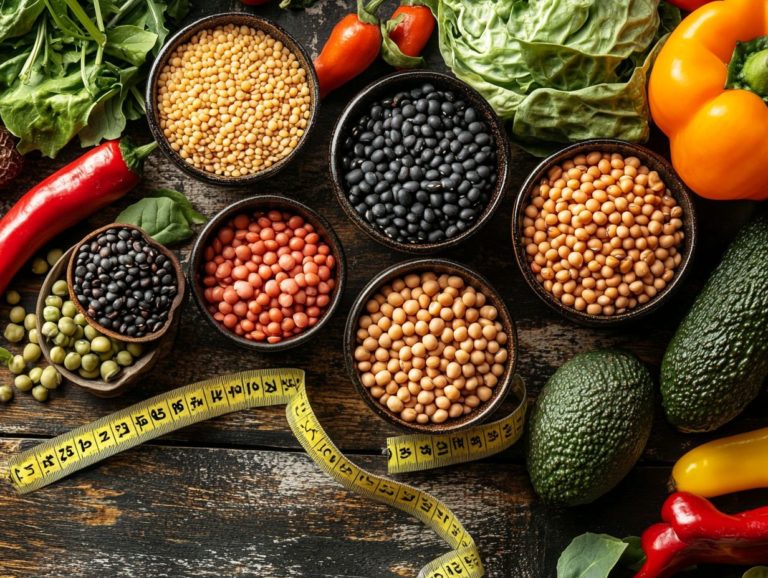How to Use Leafy Greens in Keto Meals
Contents
- Enhancing Your Keto Journey with Leafy Greens
- Key Takeaways:
- What Is the Keto Diet?
- What Are Leafy Greens?
- Why Are Leafy Greens Important on the Keto Diet?
- How to Incorporate Leafy Greens into Keto Meals
- Conclusion
- 4. Incorporate into Soups and Stews
- 5. Make Veggie ‘Noodles’
- Which Leafy Greens Are Best for the Keto Diet?
- How Much Leafy Greens Should You Eat on the Keto Diet?
- Tips for Buying and Storing Leafy Greens
- 1. Choose Fresh, Organic Greens
- 2. Store in Airtight Containers or Bags
- 3. Use Within a Few Days for Optimal Freshness
- Frequently Asked Questions
- Incorporating Leafy Greens into Your Keto Diet
- How can I incorporate leafy greens into my keto meals?
- Are there any leafy greens that should be avoided on a keto diet?
- Can I eat unlimited amounts of leafy greens on a keto diet?
- Do I need to cook leafy greens before adding them to my keto meals?
- Are there any nutritional benefits to using leafy greens in keto meals?
Enhancing Your Keto Journey with Leafy Greens
The Keto diet, celebrated for its low-carb, high-fat approach, may leave you pondering how to craft a balanced and nutritious menu that aligns with your dietary restrictions. One of the most effective ways to achieve this is by embracing leafy greens. These nutritional powerhouses are not only low in carbs but also brimming with essential vitamins and minerals. This article delves into the significance of leafy greens within the Keto framework, offering practical tips for seamlessly integrating them into your meals and showcasing the best varieties to keep your plate vibrant and healthy. Get ready to discover exciting ways to supercharge your Keto journey!
Key Takeaways:

- Incorporating leafy greens into Keto meals is crucial for maintaining a well-rounded and nutritious diet.
- There are many creative ways to include leafy greens in Keto meals, such as using them as wraps or making veggie “noodles”.
- When buying and storing leafy greens, opt for fresh, organic options and use them within a few days for optimal freshness. Utilizing the right cooking tools like an Instant Pot can make preparation easier.
What Is the Keto Diet?
The Keto diet is a high-fat, low-carbohydrate diet designed to transition your body into a state of ketosis, where it effectively utilizes fats for energy instead of carbohydrates. This approach emphasizes the importance of consuming healthy fats while imposing strict limits on net carbohydrates.
This means you can enjoy a variety of foods while staying aligned with your dietary objectives and health concerns. By focusing on meal prepping and planning, the Keto diet ensures your meals remain low in carbs without sacrificing flavor, making it an appealing option for anyone aiming to elevate their health and wellness through informed nutritional choices.
What Are Leafy Greens?
Leafy greens are a treasure trove of nutrients, packed with vitamins, minerals, and dietary fiber that are essential for a balanced diet. You ll find familiar favorites like spinach, kale, and collard greens, each bringing its own distinct flavor and a wealth of health benefits to the table. These versatile vegetables can effortlessly enhance a variety of dishes, from fresh salads to hearty soups.
Their low net carb content and high nutritional density make them especially valuable for those pursuing low-carb or Keto-friendly meal plans, particularly in Southern cooking and other traditional recipe variations.
Why Are Leafy Greens Important on the Keto Diet?
Leafy greens are essential to your Keto diet, thanks to their low carbohydrate content and impressive nutritional profile. They are perfect for anyone striving to maintain a ketogenic lifestyle. Packed with essential vitamins and minerals, these greens support your overall health while serving as an excellent source of dietary fiber that aids digestion and promotes a feeling of fullness.
By weaving leafy greens into your meal prep, you can savor a delightful array of flavors and textures, all while staying within the crucial carb limits necessary for achieving ketosis.
How to Incorporate Leafy Greens into Keto Meals
Incorporating leafy greens into your Keto meals can be both effortless and delightful, elevating the flavor and nutrition of your dishes. You have a plethora of cooking methods at your disposal, whether you choose to use them as a vibrant base for salads, blend them into smoothies, or stir them into soups each option provides a unique opportunity to increase your vegetable intake and adhere to your low-carb lifestyle.
Leafy greens can also be used as wraps or buns for sandwiches or burgers, showcasing their versatility for meal prep and quick recipes that effortlessly align with your low-carb lifestyle while respecting your dietary needs.
Conclusion
Incorporating leafy greens into your Keto diet not only adds essential nutrients but also enhances the flavors and textures of your meals. Start adding these nutritional powerhouses to your dishes today and enjoy the benefits of a balanced, healthy, and vibrant Keto lifestyle!
1. Use as a Base for Salads
Using leafy greens as the foundation for your salads is a brilliant way to craft a nutritious and satisfying dish that perfectly aligns with your Keto diet. By blending various leafy greens like spinach, kale, or collard greens, you invite delightful crunch and a wealth of vitamins into your meal, while incorporating healthy fats through ingredients such as avocados or nuts. To truly elevate the flavor profile, consider whisking together a creamy dressing with apple cider vinegar or fresh garlic this way, you ensure your meal remains low in carbs but high in both taste and nutrition.
The versatility of leafy greens opens the door to endless combinations; for a Mediterranean flair, think about adding roasted red peppers, feta cheese, and olives to provide a burst of flavor. Alternatively, a mix of arugula with grilled chicken, cherry tomatoes, and pumpkin seeds can transform into a wholesome meal that s packed with protein.
Never underestimate the importance of healthy fats in your salads; they aid in absorbing fat-soluble vitamins and help maintain a balanced diet. Choose dressings that feature ingredients like olive oil, tahini, or Greek yogurt to create a harmonious balance in your dish. Each bite can become a celebration of diverse flavors and textures, contributing not only to your satisfaction but also to your overall health.
2. Add to Smoothies
Adding leafy greens to your smoothies is a brilliant way to elevate the nutritional value of your drink while keeping it low in carbs ideal for your Keto journey. When you blend spinach or kale with low-carb fruits and healthy fats like almond butter or coconut milk, you create a delectable, nutrient-rich beverage that s brimming with essential vitamins, minerals, and dietary fiber. Adjusting to different recipe variations can help you discover new flavors and maintain your dietary objectives.
This straightforward recipe can be enjoyed at any time of the day, serving as a quick meal or snack that aligns perfectly with your dietary goals.
By incorporating these greens, you significantly boost your intake of vital nutrients while enjoying a creamy texture that cleverly masks any bitterness. If you re looking to enhance the flavor, a splash of lemon juice or a few slices of cucumber can add a refreshing twist.
Using frozen fruits can also contribute to a thicker consistency, making your smoothie even more satisfying. Don t hesitate to experiment with combinations like Swiss chard and avocado or arugula with berries; these can lead to delightful discoveries while supporting your digestive health thanks to their dietary fiber content.
These simple tweaks ensure that every sip delivers a nutritional punch without skimping on taste.
3. Use as Wraps or ‘Buns’

Using leafy greens as wraps or ‘buns’ is a brilliant way for you to savor your favorite fillings while sticking to a keto-friendly diet. Imagine filling large collard greens or romaine leaves with delicious ingredients like crispy bacon, grilled chicken, or fresh vegetables. This offers a satisfying alternative to traditional bread or tortillas. Not only does this method help you cut down on net carbs, but it also boosts your vegetable intake, making it a superb addition to your meal prep rotation and Southern cooking ventures.
Incorporating leafy greens into your meals can feel like an exciting culinary adventure. For instance, you could create a delightful Asian-inspired wrap using butter lettuce filled with sesame chicken, crunchy carrots, and a drizzle of soy sauce.
Alternatively, transform your collard greens into a Mediterranean bun by packing in a mix of spiced lamb, tzatziki sauce, and diced cucumbers. This creative approach opens the door to endless variations, ensuring that your meals remain both exciting and nutrient-rich while keeping carb counts low.
Plus, wrapping your food in greens not only elevates flavor and texture but also proves that healthy choices can be genuinely enjoyable.
4. Incorporate into Soups and Stews
Incorporating leafy greens into your soups and stews elevates the flavor and enriches the nutritional profile of your dishes, making them ideal for a robust Keto meal.
Picture this: adding greens like spinach or kale to a luscious chicken broth, complemented by spices such as Old Bay seasoning, celery salt, and crushed red pepper. This combination results in a comforting and satisfying meal that aligns perfectly with your dietary aspirations.
This cooking method is flexible. You can use various greens depending on what s available or in season, showcasing their remarkable versatility in the kitchen.
Saut ing these leafy additions before tossing them into the broth can intensify their flavors, delivering a richer taste experience. If you opt for techniques like blanching or lightly steaming, you ll preserve their vibrant colors and essential nutrients, creating visually stunning and health-conscious dishes.
The health benefits are significant! Leafy greens are brimming with vitamins A, C, and K, along with crucial minerals and antioxidants that promote overall wellness. So, whether you blend them into a slow-cooked stew or whip up a quick weekday soup, you can be sure your meal will be both nourishing and incredibly satisfying!
5. Make Veggie ‘Noodles’
Creating veggie ‘noodles’ from leafy greens is a brilliant way to indulge in a low-carb alternative to traditional pasta, making it a perfect fit for your Keto diet.
You can spiralize zucchini or use cooked collard greens to make a delicious meal that satisfies your cravings without adding many carbs. Using an Instant Pot can expedite the process, enabling you to have a quick recipe ready in no time.
Imagine pairing these vibrant green noodles with savory sauces or rich proteins like bacon for a dish that captures the essence of Southern cooking while remaining entirely keto-friendly. A sprinkle of Old Bay seasoning can elevate the flavor profile further.
This approach elevates the nutritional profile of your meal and unleashes a realm of culinary creativity. Picture a quick saut of spinach that wilts beautifully, soaking up flavors from fresh garlic, or using a mandoline to create delicate ribbons of Swiss chard.
When it comes to sauce pairings, consider a tangy pesto or a creamy cauliflower Alfredo that pairs exquisitely with the earthiness of the greens. For a lighter touch, a drizzle of olive oil or other cooking oils with a hint of garlic can enhance the fresh flavors while keeping the dish completely low-carb.
This makes it a versatile choice for meal prep or quick dinners that never compromise on taste. Try these combinations today!
Which Leafy Greens Are Best for the Keto Diet?
When embarking on the Keto diet, selecting leafy greens that are low in net carbs yet rich in nutritional value is crucial for supporting your dietary goals.
Choices like spinach, kale, collard greens, arugula, and Swiss chard stand out as excellent options, each with unique vegetable nutrients. These greens deliver an impressive array of vitamins, minerals, and dietary fiber while elevating the flavor and texture of your meals.
Each variety brings its own unique health benefits to the table, making them critical staples in any well-structured keto meal plan.
1. Spinach
Spinach is one of the most versatile leafy greens. It’s packed with essential vitamins and minerals that support your overall health while remaining incredibly low in net carbs.
This leafy green is rich in dietary fiber, vitamins A, C, and K, and vital minerals like iron and calcium. You can enjoy spinach raw in salads, blend it into smoothies, or incorporate it into various dishes, making it a fantastic addition to any keto-friendly meal prep.
Beyond being low in calories, spinach offers significant advantages for anyone on a ketogenic diet. Its high fiber content supports digestion and promotes a sense of fullness, helping you feel satisfied without exceeding your carb limits.
The vitamins in spinach play a crucial role in enhancing immune function, improving skin health, and strengthening bones. This positions spinach as a great source of nutrients for those prioritizing nutrient-dense foods.
Whether you toss it into hearty stews or serve it as a vibrant saut , incorporating spinach into your meals not only elevates flavor but also boosts nutritional quality, transforming it into a critical component of a balanced diet.
2. Kale
Kale, celebrated as a superfood, offers an array of health benefits that fit perfectly into your keto diet. This leafy green is low in carbs yet packed with dietary fiber and a wealth of vitamins A, C, and K, making it a healthy option.
Enjoy kale raw in salads, saut ed with garlic, or blended into smoothies. It easily fits into your meal planning, supporting your health goals with ease.
Its versatility lets you explore different cooking techniques, like steaming, which preserves its nutrients, or roasting, which gives it a delightful crispiness. Using an Instant Pot can also be a quick method to prepare kale.
Kale has impressive antioxidant properties that can help reduce inflammation and promote overall wellness.
If you’re following a low-carb regimen, incorporating this leafy green can boost satiety while keeping carb intake in check. This makes it a great addition to meal prep for quick recipes.
Consider adding kale to soups or using it as a base for a grain-free pizza crust. These are just a few creative ways to enjoy its robust flavors and health benefits.
3. Arugula
Arugula is that peppery leafy green you didn t know you were missing. It brings a distinctive flavor to your salads and dishes, making it a stellar choice for the keto diet.
With its low carb content and impressive nutritional profile packed with vitamins A and K arugula not only enhances the taste of your meals but also boosts their healthfulness.
This versatile green shines when used fresh in salads or as a garnish to add sophistication to your culinary creations.
Arugula has a slightly spicy taste that pairs well with grilled chicken, roasted vegetables, and creamy dressings. This makes it an ideal companion for your keto-friendly meals.
If you re embracing a ketogenic lifestyle, adding arugula to your recipes will not only enhance flavor but also deliver essential nutrients while keeping your carbohydrate intake in check.
Feel free to saut arugula or blend it into smoothies for a nutrient-dense kick. Its robust nature allows it to stand out in various dishes, transforming your everyday meals into exciting keto-friendly options.
4. Collard Greens

Collard greens are an essential part of Southern cuisine, celebrated for their hearty texture and rich flavor, making them an excellent choice for your keto diet. These leafy greens are not only low in net carbs, but they also come loaded with essential vitamins A, C, and K, along with dietary fiber that offers many health benefits.
Whether you saut them with bacon or toss them into a flavorful soup, collard greens have the power to elevate your meals while aligning with your nutritional goals. Adding simple cooking instructions can make these greens even more accessible.
This versatile green can transform your dishes into something truly special! Known for their ability to lower cholesterol and support digestion, collard greens have established a well-deserved reputation in the world of nutritious eating. They also contain healthy fats and dietary fiber, making them a staple in any keto meal plan.
In Southern cooking, they often accompany smoked meats and cornbread, perfectly harmonizing with robust flavors. As an outstanding source of antioxidants, these greens help combat inflammation and guard against chronic diseases. Cooking collard greens with apple cider vinegar and chicken broth can enhance their flavor and nutritional value.
This makes collard greens an ideal ingredient for a balanced, low-carb meal plan that prioritizes health without compromising on taste.
5. Swiss Chard
Swiss chard is a vibrant leafy green that offers a delightful blend of slightly earthy flavor and impressive nutritional benefits, making it an exceptional choice for anyone following a keto diet. Its high dietary fiber content contributes to its health benefits.
With low net carbs and an abundance of vitamins A, C, and K, Swiss chard enhances the nutritional profile of your meals while serving as a rich source of dietary fiber. This versatile green can be prepared using various cooking methods from saut ing to steaming bringing both flavor and health benefits to your dishes.
Beyond its culinary flexibility, Swiss chard is packed with antioxidants that contribute to your overall well-being and help combat oxidative stress in your body. Don t miss out on incorporating it into salads, soups, or even as a substitute for other greens in smoothies your body will thank you for the nutrients!
It pairs beautifully with a range of flavors, from the bright zest of lemon to the hearty richness of garlic, allowing cooks of all levels to create vibrant meals. Whether braised, roasted, or tossed into stir-fries, Swiss chard serves as a colorful and nutritious foundation for countless recipes, making it a must-have in any health-conscious kitchen.
How Much Leafy Greens Should You Eat on the Keto Diet?
Determining the appropriate amount of leafy greens to consume on the keto diet requires a delicate balance between your dietary restrictions and your nutritional needs. Consider consulting with a nutritionist to address any health concerns.
It’s generally recommended that you include a variety of leafy greens in your daily meals, targeting at least 2-3 servings. This maximizes your intake of essential vitamins, minerals, and dietary fiber while enriching your meals with vibrant flavors.
By thoughtfully incorporating a diverse array of greens into your meal planning, you can fully embrace the low-carb principles of the keto lifestyle while enjoying a rich culinary experience.
Tips for Buying and Storing Leafy Greens
When buying and storing leafy greens, making thoughtful choices can enhance their freshness and health benefits, ensuring you get the most nutritional value from your meals.
Choosing fresh, organic greens not only elevates the flavor but also minimizes your exposure to harmful pesticides, making them a perfect fit for your keto diet. Checking the ingredient list for each green vegetable can help ensure you’re getting the best quality.
Employing proper storage techniques like using airtight containers or bags can significantly preserve their quality, allowing you to savor their vibrant colors and textures for extended periods. Using the right cooking tools can also help retain nutritional benefits during vegetable preparation.
1. Choose Fresh, Organic Greens
Adopting effective meal planning and preparation steps can ensure that your vegetable intake is both diverse and nutritious.
Choosing fresh, organic greens is essential for unlocking health benefits. This is especially important on a Keto diet. By selecting organic greens, you re opting for produce grown without synthetic pesticides and fertilizers. This means you significantly reduce your exposure to harmful chemicals while enjoying vegetables brimming with vitamins and minerals.
When you re at the store, look for greens that exhibit vibrant colors and crisp textures; these are telltale signs of optimal freshness and quality.
Consider sourcing your greens from local venues, like farmers’ markets, where produce is often picked at the height of ripeness. Take a moment to inspect the leaves carefully. Steer clear of any that appear wilted or have brown edges, as these may signal age or improper handling. It s also a smart move to choose seasonal varieties, as these tend to be fresher and bursting with flavor.
Keep in mind that organic greens not only elevate your nutrition but also support sustainable practices that benefit the environment. When you re shopping, don t forget to look for certifications that confirm your purchases meet organic standards, ensuring that you maximize health benefits with every delicious bite.
2. Store in Airtight Containers or Bags
Storing your leafy greens in airtight containers or bags is an excellent strategy for preserving their freshness and nutritional value over time. By minimizing their exposure to air and moisture, you can effectively prevent wilting and spoilage, keeping your greens crisp and flavorful for your culinary creations.
Placing them in the crisper drawer of your refrigerator can significantly enhance their longevity while maintaining their health benefits. The crisper drawer is specifically designed to maintain humidity and freshness.
To truly maximize the preservation of these delicate vegetables, selecting the right type of container is crucial. Opting for glass containers or reusable silicone bags is ideal, as they provide a tight seal without the risk of harmful chemicals leaching into your greens.
Lining the container with a paper towel is another smart move, as it absorbs excess moisture and combats any dampness that could lead to decay. When organizing your refrigerator, consider placing the greens towards the back of the crisper drawer, where the temperature tends to be more stable, rather than in the door, which experiences more temperature fluctuations.
By implementing these best practices, you ll ensure that your leafy greens remain vibrant and nutritious for days, allowing you to fully enjoy their health benefits.
3. Use Within a Few Days for Optimal Freshness
Make the most of your leafy greens by using them within a few days for the freshest flavor! As these greens age, they tend to lose their crisp texture and vibrant color, which can significantly diminish both their health benefits and overall taste.
By planning your meals thoughtfully and incorporating these vegetables early on in your cooking, you can savor their maximum flavor and nutrition while staying true to your Keto diet.
To truly make the most of these nutrient-packed powerhouses, consider organizing your grocery list to prioritize leafy greens at the start of the week. Storing them properly in perforated bags in the fridge helps maintain their moisture and crispness, ensuring they stay delightful until you re ready to use them.
Creating versatile meal plans that feature salads, stir-fries, or smoothies allows you to consume these greens promptly. By incorporating them into your breakfast, lunch, or dinner, you not only elevate your nutrient intake but also keep your meals dynamic and interesting. Timely consumption enhances flavor and ensures you reap all the impressive health benefits they offer.
Frequently Asked Questions
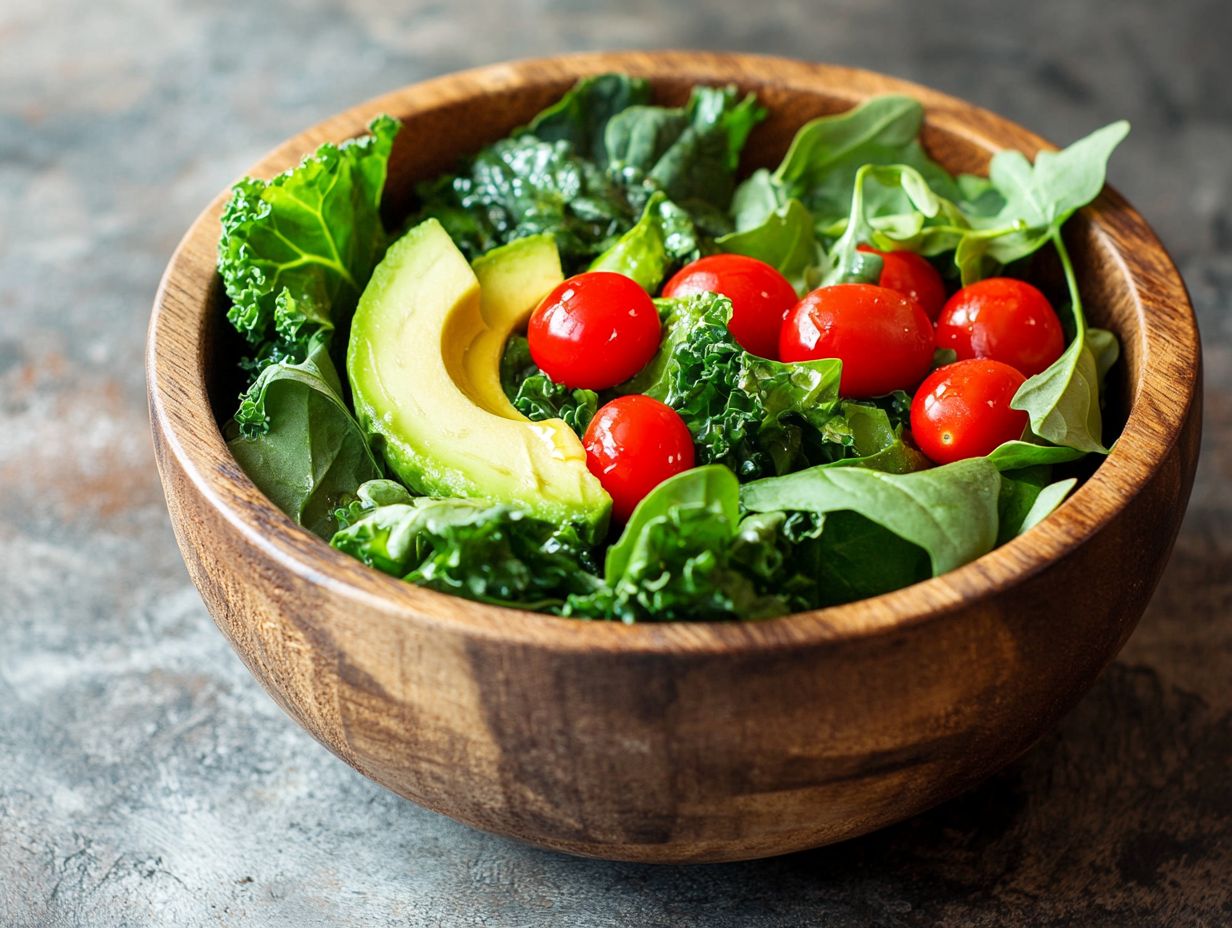
What are some examples of leafy greens that can be used in keto meals?
Some examples of leafy greens that are suitable for keto meals include spinach, kale, lettuce, arugula, collard greens, and Swiss chard.
Incorporating Leafy Greens into Your Keto Diet
Leafy greens are an essential part of a healthy keto diet, offering numerous benefits while keeping your carb count low. Let’s explore how to make the most of these nutrient-rich foods!
How can I incorporate leafy greens into my keto meals?
Leafy greens can be used in many delicious ways, such as in salads, as a side dish, in soups or stews, or even in smoothies and as a topping for pizza.
Are there any leafy greens that should be avoided on a keto diet?
While most leafy greens are low in carbs and perfect for a keto diet, avoid starchy vegetables like peas, corn, and potatoes. These are higher in carbs and not suitable for keto.
Can I eat unlimited amounts of leafy greens on a keto diet?
Although leafy greens are a fantastic addition to your keto meals, remember to monitor your overall carb intake to stay within your daily limit. Eating too many leafy greens can also lead to digestive issues for some individuals.
Do I need to cook leafy greens before adding them to my keto meals?
Most leafy greens can be enjoyed raw and don t require cooking. However, some people may find lightly cooking their greens makes them tastier and easier to digest.
Are there any nutritional benefits to using leafy greens in keto meals?
Absolutely! Leafy greens are loaded with essential vitamins, minerals, and fiber, making them a nutritious addition to any meal. They also contain antioxidants, which help protect your body from damage and support your overall health.

